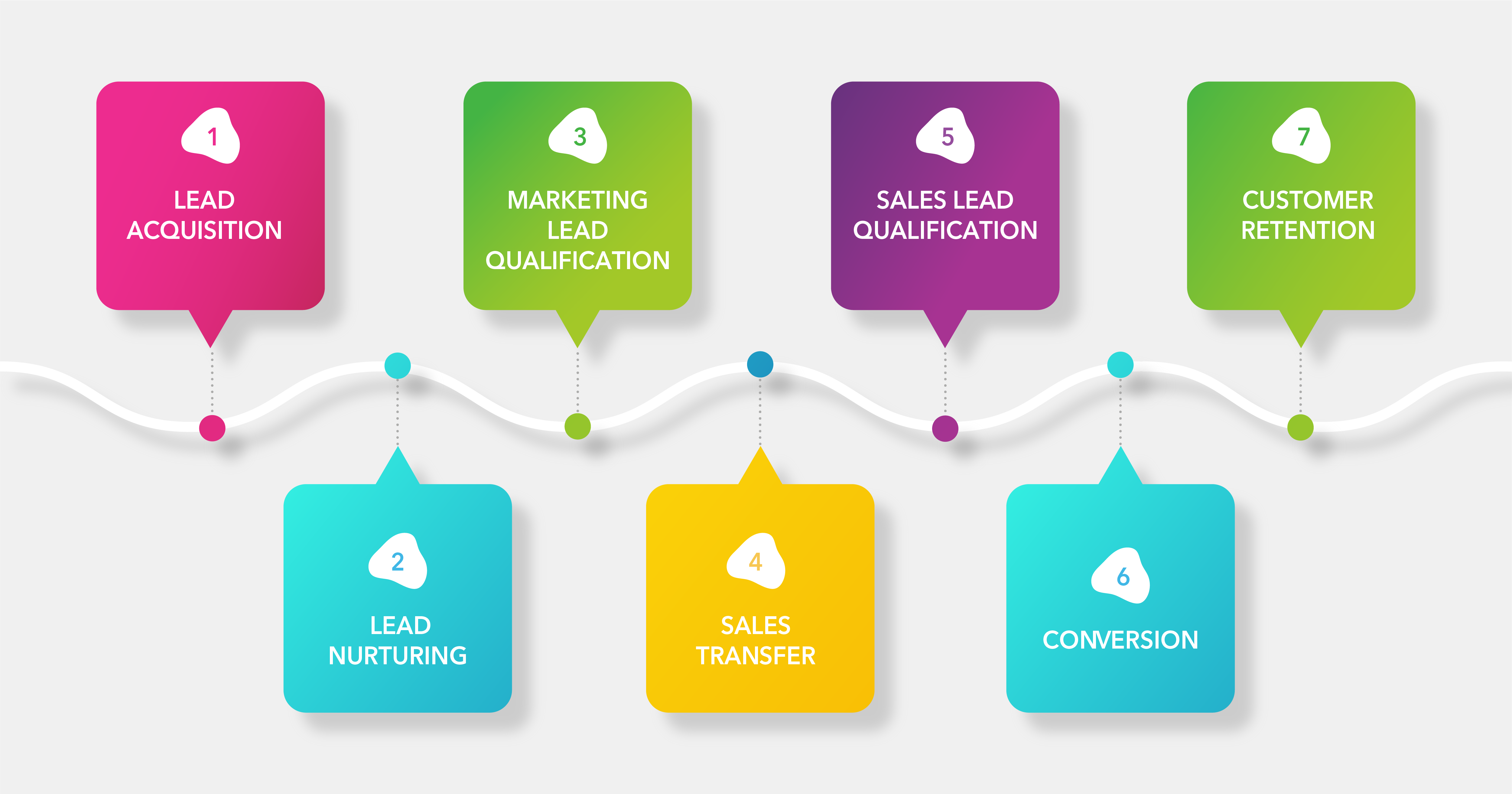Lead capture is an important process for anyone who runs a website. Whether you run a small business or own a large firm, you will need to perform lead capture. In this article, we shall look at lead capture – what it is and how to create the perfect lead capture strategy.

Digital Marketing, Digital Trends | MIN READ

Table of Contents
What is lead capture?
Lead capture refers to collecting information on the people who visit your site. Thousands of people may visit your site, but without the right lead capturing strategy, your highest-paying customers might pass by without notice.
Lead capture involves collecting names, email addresses, phone numbers, and addresses (mostly in the case of e-commerce websites.)
What is a lead?
In digital marketing, a lead is an individual or company interested in the products or services you sell.
Therefore, lead capturing means grabbing the attention of interested users long enough to get their contact information and turn them into paying customers.
Lead capture is also known as conversion because it involves converting a visitor into a lead or customer.
Lead capturing vs. lead generation
You may have heard of lead generation. So, what is the difference between lead capture and lead generation?
For starters, lead generation is an ongoing process that drives traffic to your site and converts users into paying customers. Your first step in lead generation may involve attracting customers from social media with high-quality graphics.
When they land on your website, users may stick around and browse through your content. If your site has relevant and interesting content, users will like your content, and this builds desire.
The last stage of lead generation is lead capture. This is where the action happens. The visitor may contact you through your contact form or live chat. On an e-commerce site, lead capture may look like a user adding items to the cart.
In other words, lead capture is the final stage of lead generation.
What is the importance of capturing leads?
Capturing leads is important for any business. It allows websites to gather contact details from interested users. In any business, having information about your targeted audience is vital – otherwise, your profits may peter out.
Here are some of the benefits of having a lead capturing strategy.
Offers freebies: Lead capturing offers freebies to potential customers. Freebies, also known as lead magnets, can be a guide, e-book, template, or prompts from which a user will benefit. With freebies, users will get to see the quality of your work.
Builds interest: Lead capturing builds interest among your site’s visitors. A good squeeze page will offer special or gated content that excites users to check your site for more free content.
Converts users to customers: The most vital result of a lead capture page is the ability to create a paying customer.
Allows users to receive news on future products: With a lead capture page, you can capture contact details like email addresses from your users. When you create new products that users might like, you can email your leads so they can check out your products.
Reduces bounce rate: Bounce rate is a statistic that Google tracks to rate the quality of your website. Lead capturing increases the time a visitor spends on your site.
How to create a successful lead capture strategy
Capturing leads is a vital part of your online business strategy. It helps you gather contact information that you can use to update users about new products and offers. Here are some steps to add to your lead capture strategy:
Plan
The main objective of lead capturing is to collect information on customers. However, you can create a more specific objective tailored to suit your business’s needs.
For example, you can focus on building interest among your customers by offering a discount in exchange for their contact details. This will entice users and keep them engaged for longer.
Build your lead capture form or page
One of the most important aspects of lead capturing is creating the ideal lead capture form or page to attract visitors. Create a compelling copy to excite visitors. You can add a time limit to your deal or offer something free to collect leads.
Here are some tips for building your lead capture form or page.
Use a template
There are many ways to build a lead capture form. Some businesses opt for pre-made templates. However, it is essential to put a unique spin on these. Otherwise, your lead capture form might resemble others.
Use popups
Popups are a unique way to attract attention from users. They appear suddenly while a user reads or scrolls down on a webpage. Popups can be closed without disrupting what a user was doing previously.
These pages advertise freebies or ask users to sign up for a newsletter. Popups are popular because they are effective in collecting emails from users. These emails can later be used to communicate news with a user.
Connect your lead form to CRM.
Once you collect your leads, you must add them to a database or Customer Relationship Management CRM system. This makes it easier to keep track of leads and contact them when necessary.
Write a compelling CTA.
A CTA has the ability to make or break a lead-capturing form. Anything too boring might cause visitors to skip out on the form.
What is a Call To Action (CTA)?
A CTA or Call to Action is a phrase or sentence that prompts a visitor to your site to perform a certain action. That action could be signing up for a newsletter, following your social media pages, or contacting you for more details.
Here are some examples of CTAs that work in lead capturing
Download our free guide now
Shop now
Contact us to learn more
Elements of an attention-grabbing CTA
Here are some tips on how to create a compelling CTA:
Use the right verbs: A CTA without strong verbs may go unnoticed. Words like buy, shop, download, and sign up are concise and get straight to the point.
Know your audience: Appeal to your audience by offering freebies they will be interested in. For example, free guides, templates, and discounts.
Use time limits: Many people will jump to fill in your forms if they know an opportunity like that will never come again. Tell users that this offer lasts only for a specified period.
A/B test or split test your lead capture form
An A/B test means creating two versions of a lead capture form to determine which one brings in more leads. The difference could be the colour of the submit button, the placement of the form on the page, the number of form fields, or any other variable you want to test.
Once you have identified the better-performing version of the form, you can implement it on your website and continue to monitor its performance over time.
How to optimise your lead capture strategy
How can you bring your lead capture form to the next level? Here are some tips to optimise your lead capture strategy.
Offer unbeatable lead magnets
Lead magnets refer to free downloadable gifts or special deals offered to visitors in exchange for their contact information. Lead magnets may include an ebook, template, prompts, guides, or special offers.
Visitors must offer their names, email addresses, or company information to avail these. This information offers insights into a business’s audience and can be used for research. Overall, however, contact information mostly offers products to potential customers.
Use chatbots
Chatbots are a popular tool in e-commerce websites in 2023. Chatbots are often used to simplify customer support and sales. A chatbot can be programmed to answer simple queries and capture leads before sending the user to a live agent.
Chatbots are available 24/7, unlike live agents, offering round-the-clock lead generation. Chatbots also help to separate low-quality leads from high-potential customers before passing them to a human customer support specialist.
Use short lead-capture forms
Ask for only the most essential information when creating a form for lead capture. Keep the form short and refrain from asking for too many personal details from visitors.
People tend to abandon long forms or forms that require too many details. Be sure to clearly label information fields on forms to reduce user confusion.
Personalise your lead capture page.
Personalise emails and lead magnets by asking users to type their names in lead capture forms.
With this information, you can communicate intimately with visitors through emails.
Mass emails can be boring and unoriginal. But an email that starts with Hi (name)! can make the biggest difference in sales.
Make your site mobile-friendly
Most of your target audience is probably using a smartphone to browse your website. These days, it is essential to make your website mobile friendly, and this means using larger text, resizing images, and offering drop-down menus.
A mobile-friendly e-commerce website can make all the difference in your lead capturing strategy.
Optimise your site for speed
To capture more leads, keep your website speeds high. A website that loads slowly is a major turn-off for customers. People love to engage with snappy websites that load quickly. With slower websites, users will usually click out.
Lead capture methods
Lead capturing is essential in digital marketing. What channels can you use to convert users into leads? Let’s find out.
Lead capture form
Lead capture forms are the most basic way to capture leads on a site. A lead capture form utilises the form format on a website. Users can enter information into a form, and it is stored on the website.
Lead capture forms are often a combination of headlines, contact fields, images, and a CTA (Call to Action.) A good lead capture form features compelling copy, good placement, limited personal details, and relevant colours.
These forms may require customer contact details in exchange for free downloadable content, including e-books, guides, templates, and more. Once these details are captured, they can be used to communicate with the customers in the future.
Squeeze page
A squeeze page is a type of landing page on a website designed with the sole purpose of collecting a visitor’s email address. By offering a freebie or an unbeatable offer, you “squeeze” a visitor into adding their email address to your CRM.
Squeeze pages are designed to be short and to the point. Here are some key elements of a squeeze page:
An attractive headline that captures users’ attention.
Compelling copy, which is short but packs a punch.
Short form requiring one or two fields of personal information.
Squeeze pages also feature an attractive lead magnet. Freebies in the form of downloadable e-books and guides are popular examples.
Email
Emails are a simple way for websites to capture leads. If you mention your email on your “Contact Us” page, some users will write to you. Although lead capture forms are the more effective option here, emails are also a reliable form of communication.
Sales
Sales are also considered a lead-capturing method. Remember, a successful lead capture strategy is anything that helps convert a user to a paying customer.
When a user adds an item to a cart or buys it, they provide personal details that can be saved and used for communication.
Over to You
Lead capture is a technical component in digital marketing. It involves creating a lead capture form or popup and populating it with compelling content and relevant visual components. These are all to collect contact details, usually email addresses.
Lead capture can be a daunting task for businesses to undertake, especially if you are not familiar with the technical aspects of web design. In such a case, an expert can take over this task for you.
Sadja WebSolutions offers comprehensive digital marketing which will take your brand from zero to profitable while collecting high-quality leads from your website and converting visitors to paying customers.
Contact us today and engage with our experts regarding compelling lead-capturing forms or popups.
 +256 206 300885
+256 206 300885

